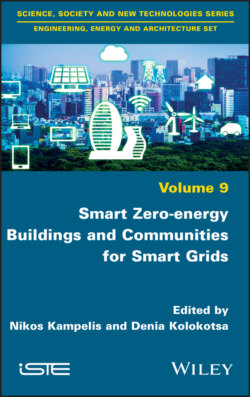Читать книгу Smart Zero-energy Buildings and Communities for Smart Grids - Группа авторов - Страница 13
1.1. Smart and zero-energy buildings
ОглавлениеThe energy consumption for buildings accounts for 40% of the energy used worldwide. It has become a widely-accepted fact that measures and changes in the building modus operandi can yield substantial energy savings, minimizing the buildings’ carbon footprint (Santamouris and Kolokotsa 2013; Deng et al. 2014). Moreover, buildings in the near future should be able to produce the amount of energy they consume, that is, become zero or nearly zero-energy buildings (ZEBs) (Kolokotsa et al. 2011; Pyloudi et al. 2015). This is a mandatory requirement based on the fact that by December 31, 2020, all new buildings were nearly zero-energy consumption buildings. New buildings occupied and owned by public authorities needed to comply with the same criteria by December 31, 2018 (Kapsalaki and Leal 2011; Kolokotsa et al. 2011).
ZEBs are buildings that work in synergy with the grid, avoiding putting additional stress on the power infrastructure (Li et al. 2013). Achieving a ZEB includes, apart from minimizing the required energy through efficient measures and covering the minimized energy needs by adopting renewable sources, a series of optimized and well-balanced operations between consumption and production, coupled with successful grid integration (Carlisle et al. 2009).
Information and computer enabled technologies (ICT) and smart grids implementation are the keys to achieve the aforementioned zero energy goals (Privat 2013). ICT for energy management in buildings has evolved considerably in the last decades, leading to a better understanding and usage of the term “smart buildings” (Nikolaou et al. 2012). Advances in the design, operation optimization and control of energy-influencing building elements (e.g. HVAC, solar, fuel cells (FC), CHP, shading, natural ventilation, etc.) unleashed the potential for the realization of significant energy savings and efficiencies in the operation of both new and existing dwellings worldwide. Smart buildings ready to be interconnected with smart grids should comply with the following requirements:
a) incorporation of smart metering;
b) demand response capabilities;
c) distributed architecture;
d) interoperability.
